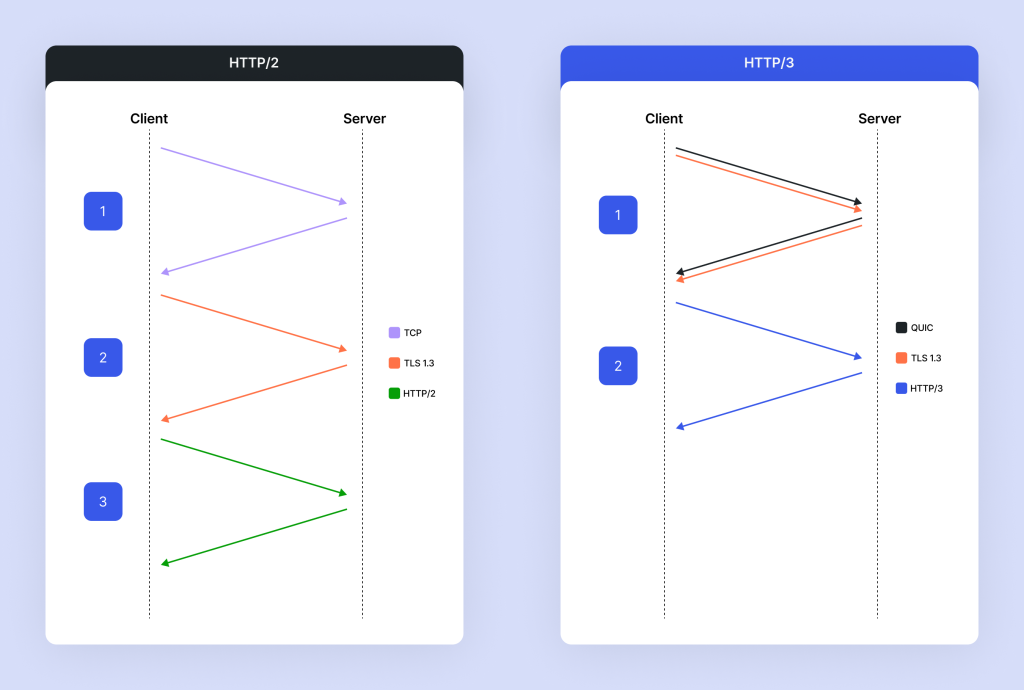HTTP/3 is the third major version of the Hypertext Transfer Protocol used to exchange information on the web. It is built on top of a new protocol called QUIC, which is set to fix some limitations of the previous protocol versions. Without getting into technical details—though feel free to do so in the comments if you have questions—our users should see performance improvements across all metrics:
Reduced latency. Due to faster connection establishment (i.e. fewer round-trips), latency from connection setup is lower.  Multiplexing. That is, using a single connection for multiple resources. While this feature is present in HTTP/2, HTTP/3 has improved on it and fixed a problem called “head of line blocking.” This is a deficiency of the underlying protocol HTTP/2 was built on top, which requires packets to be in order before relaying them for processing. Reliability. Designed to perform better in varying network environments, HTTP/3 uses modern algorithms to help it recover faster from lost data and busy networks. Improved security. QUIC uses the latest cryptography protocols (TLSv1.3) to encrypt and secure data. More of the data
Multiplexing. That is, using a single connection for multiple resources. While this feature is present in HTTP/2, HTTP/3 has improved on it and fixed a problem called “head of line blocking.” This is a deficiency of the underlying protocol HTTP/2 was built on top, which requires packets to be in order before relaying them for processing. Reliability. Designed to perform better in varying network environments, HTTP/3 uses modern algorithms to help it recover faster from lost data and busy networks. Improved security. QUIC uses the latest cryptography protocols (TLSv1.3) to encrypt and secure data. More of the data